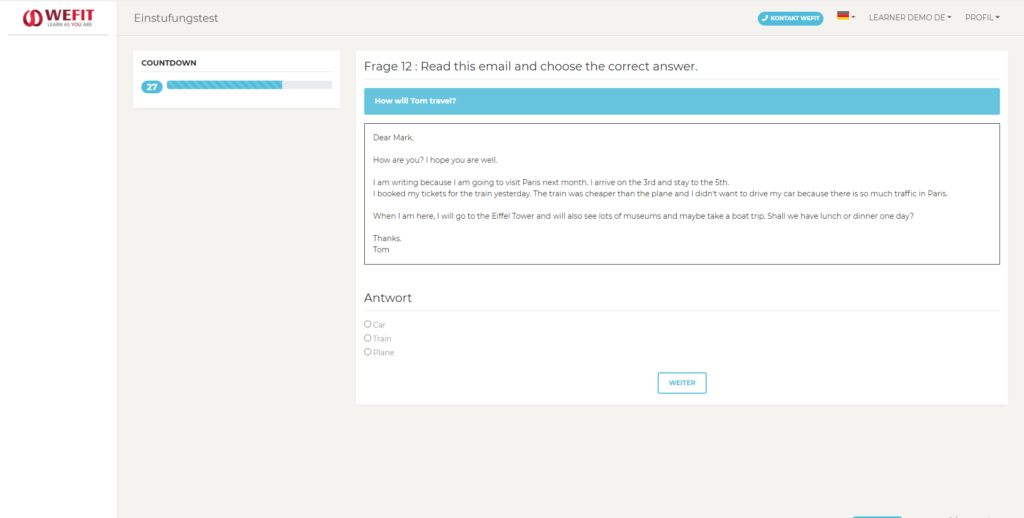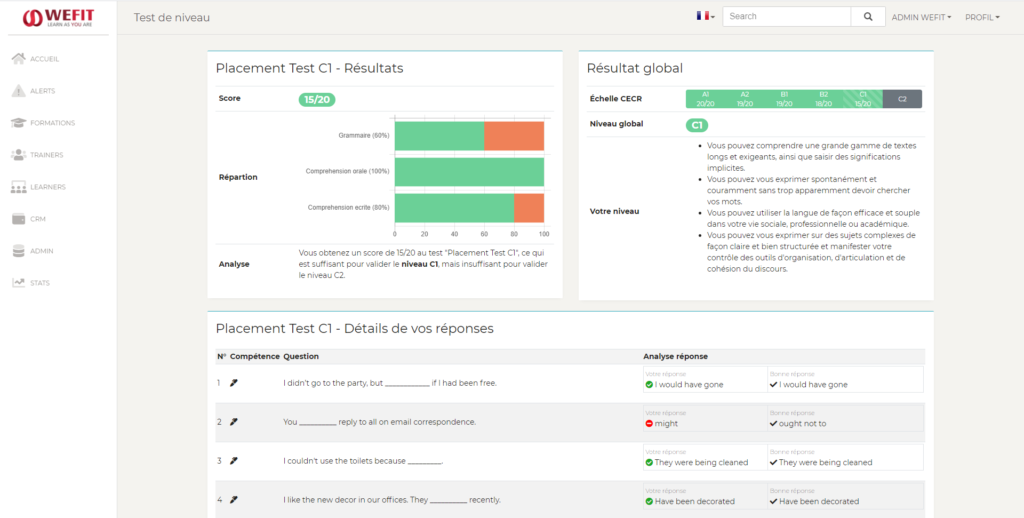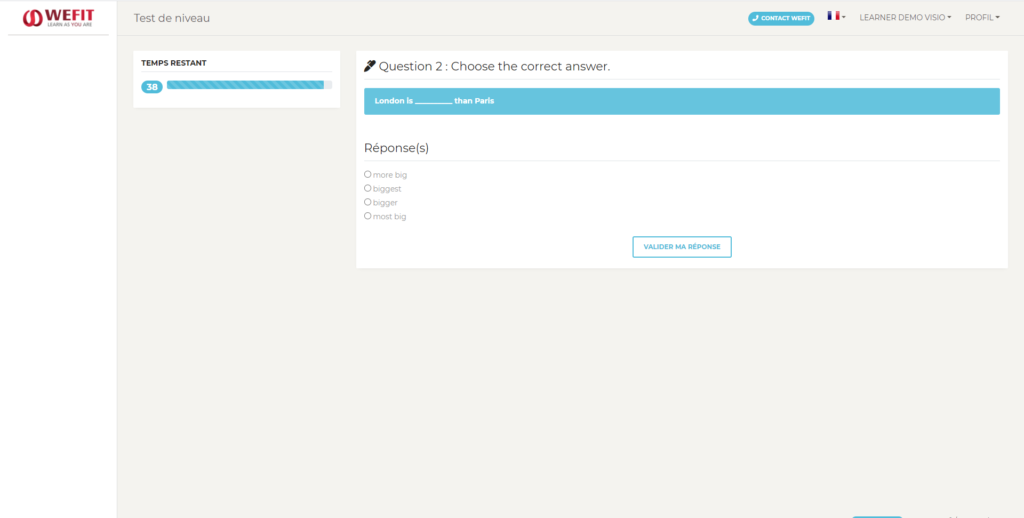PASSEZ GRATUITEMENT VOTRE TEST DE NIVEAU
("PLACEMENT TEST")
Connaître son niveau sur l’échelle européenne et mieux comprendre vos axes de progression
Vous souhaitez connaître votre niveau d’anglais ?
- Identify your language level based on the 6 levels that are outlined by CEFR (Common European Framework Of Reference For Languages)
- This can take between 10 and 50 minutes depending on which level you reach
- Evaluate the 3 competencies: Writing, written comprehension and oral comprehension
- A l’écrit (grammaire & vocabulaire) : une série de questions ayant trait aux règles grammaticales, aux conjugaisons ou au vocabulaire.
- Compréhension écrite : des contenus de type texte et image vous sont présentés, vous êtes testé(e) sur votre faculté de compréhension des idées.
- Compréhension orale : des extraits audio seront diffusés et vous serez testé(e) sur les facultés de compréhension du sujet abordé.
A1
A2
B1
B2
C1
C2
JE SUIS PRÊT !
Créez gratuitement un compte sur WEFIT et passez votre test de niveau
Le test en images...

Difficulté croissante
Le test est basé sur des séries de 20 questions :10 grammaire / vocabulaire
5 compréhension écrite
5 compréhension orale

Analyse des résultats
Chaque palier correspond à un niveau de compétence linguistique. Vous pouvez également accéder à la correction de vos réponses.
Questions chronométrées
En fonction des différents paliers, le chronomètre s’ajuste pour accroître le niveau de difficulté et cibler au mieux votre niveau.
Common European Framework of Reference for Languages
- Can understand and use familiar everyday expressions and very basic phrases aimed at the satisfaction of needs of a concrete type.
- Can introduce him/herself and others and can ask and answer questions about personal details such as where he/she lives, people he/she knows and things he/she has.
- Can interact in a simple way provided the other person talks slowly and clearly and is prepared to help.
- Can understand sentences and frequently used expressions related to areas of most immediate relevance (e.g. very basic personal and family information, shopping, local geography, employment).
- Can communicate in simple and routine tasks requiring a simple and direct exchange of information on familiar and routine matters.
- Can describe in simple terms aspects of his/her background, immediate environment and matters in areas of immediate need.
- Can understand the main points of clear standard input on familiar matters regularly encountered in work, school, leisure, etc.
- Can deal with most situations likely to arise whilst travelling in an area where the language is spoken.
- Can produce simple connected text on topics which are familiar or of personal interest.
- Can describe experiences and events, dreams, hopes & ambitions and briefly give reasons and explanations for opinions and plans.
- Can understand the main ideas of complex text on both concrete and abstract topics, including technical discussions in his/her field of specialisation.
- Can interact with a degree of fluency and spontaneity that makes regular interaction with native speakers quite possible without strain for either party.
- Can produce clear, detailed text on a wide range of subjects and explain a viewpoint on a topical issue giving the advantages and disadvantages of various options.
- Can understand a wide range of demanding, longer texts, and recognise implicit meaning.
- Can express him/herself fluently and spontaneously without much obvious searching for expressions.
- Can use language flexibly and effectively for social, academic and professional purposes. Can produce clear, well-structured, detailed text on complex subjects, showing controlled use of organisational patterns, connectors and cohesive devices.
- Can understand with ease virtually everything heard or read.
- Can summarise information from different spoken and written sources, reconstructing arguments and accounts in a coherent presentation.
- Can express him/herself spontaneously, very fluently and precisely, differentiating finer shades of meaning even in more complex situations.


